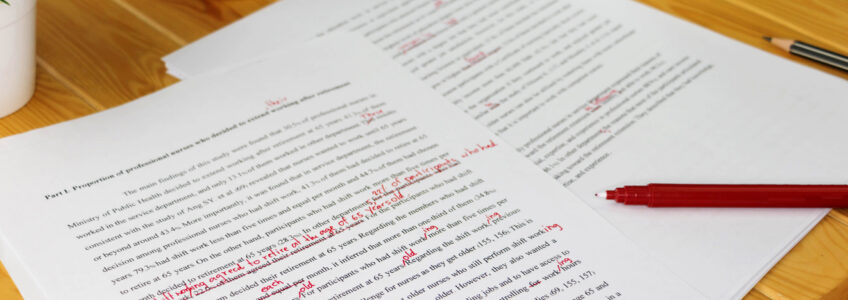
It goes without saying that you should check every single piece of content created for your brand before it gets published. Whether it’s a simple blog article or a series of social posts, any bit of writing attached to your company ideally should be reviewed beforehand (although you’d be surprised at how many skip this vital step).
This doesn’t just mean running a spell-check or giving it a quick scan either; all content should be both proofread AND sub-edited. These terms may sound like synonyms, but there is a key distinction and both play an important role in ensuring your content is ready for public viewing.
To clarify this common confusion, we’ve created a quick guide on the difference between the two and why both should be an important part of your content creation process.
What is proofreading?
Proofreading is the more basic part of checking content that you’ll probably be doing already. It’s the process of checking the copy for spelling errors, typos, grammar and punctuation mistakes, as well as fixing the formatting so that everything is consistent. Issues like these can be embarrassing if published, so this part of the process should never be skipped.
What is sub-editing?
Sub-editing, sometimes referred to as copy editing, is where the content is refined and checked against the brief. Does it match all of the requirements in the brand guidelines such as the tone of voice? Is it factually accurate and written in a way that’s easy to read? Is it consistent with the rest of the site’s content? Or, is it full of jargon and written in a way that’s confusing and clunky?
The process involves checking that all of these things match up so that the content actually does what it needs to. It’s about tweaking the copy to ensure it’s as good as it can be and will deliver the best results possible. After all, if the aim of the content is to engage customers and generate conversions, then you need to ensure it does so in a way that aligns with your wider strategy.
Why are both important?
Proofreading and sub-editing are both needed as part of your process, as without either one of them, all of your hard work could be for nothing. Just proofreading your content isn’t enough, as error-free content won’t be effective if it doesn’t hit the brief. In the same vein, the most interesting piece of content in the world will embarrass your brand and turn away readers if it’s riddled with mistakes.
Of course, mistakes happen and occasionally something will slip through the safety net. But, the chances of this can be minimised as much as possible by ensuring your content is both proofread and sub-edited prior to publication.
Ideally, this should be done by someone other than the original writer. It’s harder to pick up on your own mistakes, as when reading your own content you often see what you think is there rather than what is actually written on the screen. For this reason, proofreading and sub-editing should be delegated to another member of your team.
Find out more
Need a crack team of knowledgeable specialists to ensure your brand’s content is up to standard before it’s published? Get in touch today to find out how we can help. Alternatively, check out the rest of the It Works Media blog to discover more valuable digital marketing insights.

